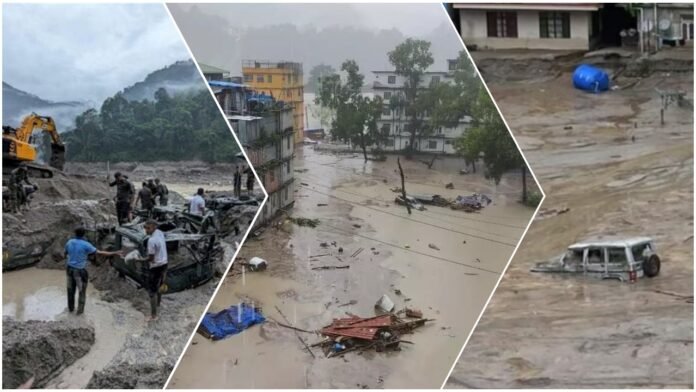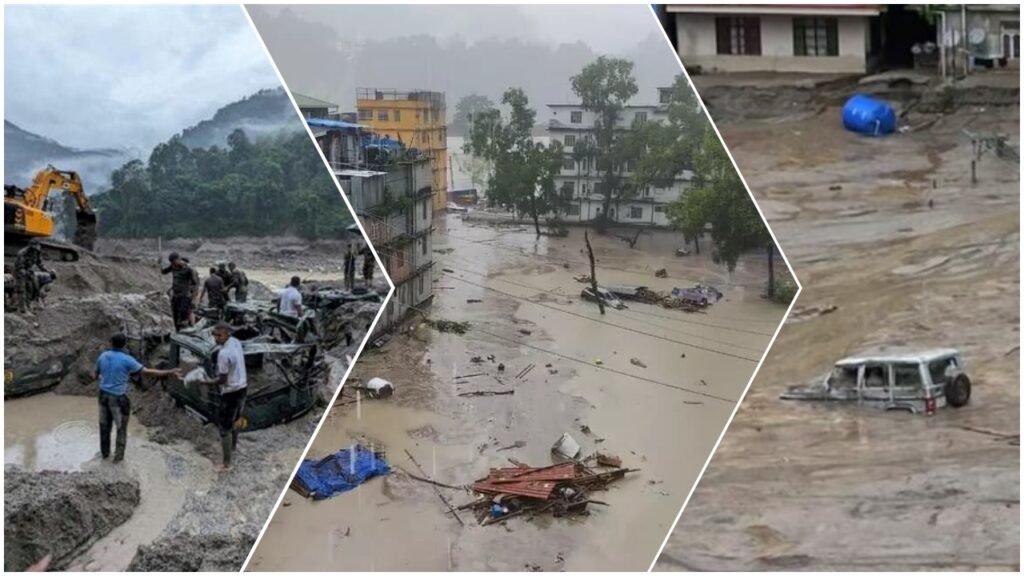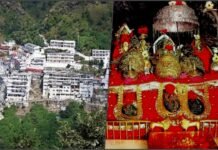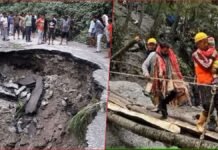
Gangtok: The flash flood that hit Sikkim on October 3 has claimed 26 lives so far, while 142 people, including 15 army soldiers, remain missing. The flood was triggered by a glacial lake outburst flood (GLOF) at Lhonak Lake in North Sikkim, which released a huge volume of water into the Teesta River. The situation worsened when the Teesta Stage 3 dam, also known as the Urja project, collapsed due to the water pressure and added to the flood.
The flood has caused widespread damage to infrastructure, houses, bridges, and crops in four districts of Sikkim: Mangan, Gangtok, Pakyong, and Namchi. According to PTI, about 25,000 people have been affected by the disaster, and 1,200 houses have been washed away. About 7,000 people are still stranded in different parts of the state, while 2,413 people have been rescued safely by the state government and NDRF teams.
The state administration has set up 22 relief camps across the state, where 6,875 people are currently living. The rescue and relief operations are still ongoing, but they are hampered by the extreme weather conditions and the mudslides that have blocked many roads.
Meanwhile, another glacial lake in Sikkim is on the verge of bursting due to the heavy rainfall and melting of glaciers. The Shako Chu Lake in Lachen Valley, located about 135 km from the capital Gangtok, is in a critical condition and poses a threat to the downstream areas. The district administration has issued an emergency alert and has started evacuating people from the vulnerable areas.

Glacial lake outburst floods are sudden and unpredictable events that occur when natural dams holding back glacial lakes are breached by various factors such as avalanches, landslides, earthquakes, or cloudbursts. Climate change is accelerating the formation and expansion of glacial lakes in the Himalayas, increasing the risk of such disasters. According to a 2020 study, there are nearly 25 glacial lakes in Sikkim that are assessed to be at risk of bursting. Scientists are also exploring whether the strong earthquake that struck Nepal on October 2 had any role in triggering the Lhonak Lake outburst.


















































